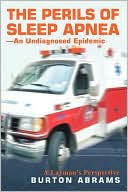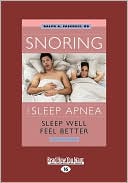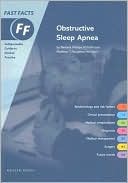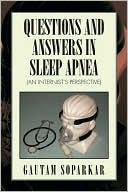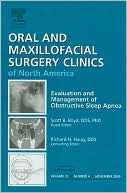
Friday, August 27, 2010
The reason for a gap in blogging.

Monday, August 9, 2010
Switching from Swift LT to Swift FX
 I've been using the Swift LT for 1 1/2 to 2 years. It worked well for me. I put it through its paces. I took it camping, took it to relatives homes, used it on couches, of course used it at home sweet home in my bed, slept on my sides, back and even face!. The LT worked like a champ in all those sleeping arrangements and positions. Why in the world would I give up the LT? Well, to see what new technology offered! The Swift LT was the third or fourth masked I tried in search of the perfect mask for me. I was very impressed at the time. So, once the Swift FX came about, I thought I should give it a try! Let's start by opening the package.
I've been using the Swift LT for 1 1/2 to 2 years. It worked well for me. I put it through its paces. I took it camping, took it to relatives homes, used it on couches, of course used it at home sweet home in my bed, slept on my sides, back and even face!. The LT worked like a champ in all those sleeping arrangements and positions. Why in the world would I give up the LT? Well, to see what new technology offered! The Swift LT was the third or fourth masked I tried in search of the perfect mask for me. I was very impressed at the time. So, once the Swift FX came about, I thought I should give it a try! Let's start by opening the package.The FX comes with more than any typical CPAP mask. The packaged contained four different sizes: extra small, small, medium, and large. The mask also came with soft wraps. Soft wraps are padding strips that go along the cheek portion of the mask. Last but not least, the FX comes with the User Guide. Enough with looking at it, I wanted to use it!
It was fairly easy to adjust. A quick pull over the head and pull a couple of straps, there, I was sealed and more importantly comfortable. I did this in front of a mirror. This makes adusting it a little easier for me. I found it best to adjust it while I have it on. Also, be sure to adjust your mask well before you want to go to sleep. When you are ready to sleep is not the best time to try and figure out a new mask. Believe me, I've tried it. Next step, don the mask at sleepy time and sleep with it!

No matter how experienced you are with CPAP, new masks always take some getting used to. When I first put it on at bed time with the CPAP on, it felt like "more air" than usual. However, the CPAP machine's setting was the same as before. The only reason I can come up with for the feeling is the following. CPAP masks are shaped differently in many ways. The air flow pattern for a particular mask is unique. What I mean is air is going to flow differently through a full face mask versus nasal pillows. Air will also flow differently in different styles of nasal pillows too. So, maybe the FX gives the sensation of "more air". Well, anyway, this concludes my specultion on this matter. On with the sleep.
Once I was laying in position to go to sleep, I noticed the FX exhaust port vented in a slightly different direction than the LT. I had to move the blanket a little so the exhaust didn't blow onto it making a ssshhhhhh sound. There, one hurdle jumped. This was actually something I had to continue to get used to. When I would roll, I had to adjust things a little to keep the ssshhhh away. As with most any mask, you have to deal with the exhaust flow. It is by no means only with the FX.
Overall, the first night with the FX went well. It wasn't as good as the good ole LT night, but I had some adjusting to do. No worries. I'll get there.
Stay tuned for more FX updates!
Wednesday, August 4, 2010
When should I have sleep study?


Monday, July 26, 2010
What to expect at a Sleep Study



Thursday, July 8, 2010
Too Hard To Exhale
"It's too hard to exhale." "I feel like I'm being smothered." These are common statements I hear in the Sleep Center from patients new to CPAP or any xPAP. Let me tell you it is normal to feel that way at first.


So, why is it more difficult to exhale? What is happening is you are breathing against a predetermined pressure. When you breathe against the pressure, it increases the air pressure in your airway. When that happens, your airway blows up like a balloon, but not as drastically of course. It opens your airway just enough to allow the free flow of air. This is called Positive Pressure Support. Some refer to this as an air splint also.
If you look at the diagrams above, note the airway is closed off in certain places. This is what happens when somebody is snoring or even worse, having an apnea or hypopnea. With xPAP therapy, doctors have found a way to keep the airway open, or supported, in order to allow air to flow, back and forth, freely.
Take a look at the diagram below. It shows an open airway. The Positive Air Pressure gently forced the tissue apart that was "clogging" or obstructing the airway.

Enough with the mechanics. How is somebody supposed to tolerate xPAP in order benefit from the therapy? When somebody is learning how to ride a bike, training wheels come in handy. Luckily, xPAP machine manufacturers have some training wheels of their own! These are in the form of ramps and pressure relief technology.
Ramping is a feature that most machines have these days. The ramp is usually activated by a button press or even automatically when the machine is turned on. Once the ramp is initiated, the xPAP machine turns itself down to a lower, more comfortable pressure for the user. At that point, the machine gradually increases pressure. After a predetermined time, usually 5 to 20 minutes, the machine reaches the prescribed pressure. Another popular "training wheel" is pressure relief technologies.
Different companies call their pressure relief technologies different names. Respironics has the Flex technologies in the form of CFlex, BiFlex, and AFlex. Resmed calls their's EPR for Expiratory Pressure Relief. They all do basically the same thing. When the xPAP machine senses you exhaling, it lowers the pressure for a quick instant in order for you to start your exhalation breath. It gives you the feeling of a "softer" exhale. For more information on these technologies, take a look at the topics I posted about them on this blog site in June 2010.
In conclusion, researchers and manufacturers are working diligently in order to make xPAP more tolerable and easier to use. If you are having a hard time with xPAP, give these features a try. It makes it easier to transition into a life with PAP therapy. It did for me.
Just like training wheels on a bicycle, you won't need ramps and pressure relief after you learn "to ride". Surprisingly enough, many people turn these features off once they got used to PAP therapy. I did.
Once again, feel free to comment or question. Take a spin around the Internet for more info. Thanks for surfing by here! I am starting to suggest some sites. Look near the upper right of the page of some sites I listed or look around on the page...there are plenty of places to go! Happy Open Airway Breathing!
Monday, July 5, 2010
Swallowing Air (Aerophagia)
 Aerophagia occurs in some that are new to CPAP. The individual will experience bloatedness and/or gas pain resulting from swallowed air. When somebody first uses xPAP, you can see how somebody could swallow air. The reason being there is so much more air than usual in your airway and under pressure. Doing normal things like coughing or even swallowing to clear your throat can make you swallow air. Everybody has experienced gas before and everybody knows how the body expells gas(in one form or another). But, don't worry. From what I understand, this usually goes
Aerophagia occurs in some that are new to CPAP. The individual will experience bloatedness and/or gas pain resulting from swallowed air. When somebody first uses xPAP, you can see how somebody could swallow air. The reason being there is so much more air than usual in your airway and under pressure. Doing normal things like coughing or even swallowing to clear your throat can make you swallow air. Everybody has experienced gas before and everybody knows how the body expells gas(in one form or another). But, don't worry. From what I understand, this usually goes away as you get used to using PAP therapy. However, aerophagia has other causes as well. To see which category you belong in, you should chat with your doctor. Below are some links about aerophagia and cpap with more information.
away as you get used to using PAP therapy. However, aerophagia has other causes as well. To see which category you belong in, you should chat with your doctor. Below are some links about aerophagia and cpap with more information.


